Podcast Episode 629: With Building Scientist Monica Rokicki
Listeners write in about outdoor showers, a Philadelphia teacher, and the science of hail damage, and we ask Monica Rokicki questions about building performance, HVAC systems, and indoor air quality.
Follow the Fine Homebuilding Podcast on your favorite app. Subscribe now and don’t miss an episode:
 |
_________________________________________________________________________________
Aaron shows us his outdoor shower. Michael tells us about a Philadelphia teacher’s important work. Josh says there’s a science to insurance adjusting. Monica explains what makes a good basement or crawlspace, the right path to a functional HVAC system, and the importance of starting with an energy audit. Jane asks about wet roof sheathing.
Check-in:
Monica Rokicki talks about her training, her building science business, and her new e-learning course for FHB on Indoor Air Quality.
DISCOUNT CODE: AIRQUALITY40
_________________________________________________________________________________
Listener Feedback 1:
Aaron from Central Texas writes:
Hey FHB podcast crew,
Back in August last year I was caught up with the current FHB podcasts, so I started going through the back catalog. I was listening to episode 5, where Brian said an outdoor shower changed his life while I was coincidentally also building an outdoor shower.
I just got around to publishing a video and post about building the shower. Hope he’s okay that I quoted him. Here’s a link:
An outdoor shower: Transforming my life
Thanks for all you do. Cheers, Aaron
RELATED STORIES
_________________________________________________________________________________
Listener Feedback 2:
Michael in Philadelphia writes:
Hello all at FHB,
I’ve been binging the podcast for several months now. Love the content, the banter, and the interviews. I’d say that you’ve definitely upped my carpentry game in the few months I’ve been listening.
I stumbled across this Instagram feed of an educator in Philadelphia (which happens to be where I live and work) who I think could be a great interview.
Michael Manney of Revive Contracting
_________________________________________________________________________________
Listener Feedback 3:
Josh writes:
Hi Patrick and team,
I listened to the recent episode while writing reports for an insurance company about hail damage to some shingled roofs! I am an independent adjuster and have done hundreds of hail inspections in the last year. There is science that goes into hail damage assessment to roofing materials. Haag Engineering is a leading firm in the testing of and research into damage to all types of roofing materials.
Insurance adjusting is a very interesting business. If you have any questions, please let me know.
Thanks,
Josh Zoller
RELATED STORIES
- Protect Houses from Severe Weather with the FORTIFIED Construction Method
- Stormproof Your Roof
- Podcast 592: PRO TALK With Insurance Adjuster Josh Zoller
_________________________________________________________________________________
Question 1 for Monica:
Monica, you mentioned in an email exchange ahead of recording that crawlspaces and basements are often problematic from a building science, comfort, and energy-consumption perspective. Can you talk about that please? We’d like to know about all things basement: vapor barriers; termite inspection strips; how code is weird about not requiring conditioning basements and we see these spaces orphaned all the time in even new construction.
RELATED STORIES
_________________________________________________________________________________
Question 2 for Monica:
Monica, please explain how the building enclosure is part of the HVAC system.
RELATED STORIES
_______________________________________________________________________________
Question 3 for Monica:
Monica, can you please talk about how designers/architects and contractors should be completing a bona fide energy audit as a first step to define the building enclosure?
RELATED STORIES
- What is a Home Energy Audit
- An Energy Auditor’s Toolkit
- Using a Blower-Door Test and Interpreting the Results
________________________________________________________________________________
Question 4: Would new venting eliminate the condensation in my attic?
Jane from Halifax, Nova Scotia, asks:
This year I purchased a Fine Homebuilding All Access membership, and it has been so helpful! Mike Guertin’s videos on air-sealing an attic were alone worth the subscription price. The podcast is pure gold.
In January, we discovered condensation and mildew on the underside of the roof sheathing in the unconditioned attic of our 1937 bungalow in Halifax, Nova Scotia. We were inspecting the attic ahead of a meeting with a roofer to discuss a planned roofing job. We were perplexed because this is the first time we have encountered condensation in the 20 years we have owned the house (we do an annual check of our roof and attic). Also, most of the roof sheathing (old tongue and groove) was dry and golden, as it always had been. Only the part over a small 2008 addition (sheathed in plywood) was affected, and there was no sign of leaking.
The roof is 20 years old and has survived three hurricanes intact. It was replaced in 2003 following Hurricane Juan. The roofers who shingled the roof in 2003 added a ridge vent. The house has no soffit vents. It has deep overhangs with exposed rafter tails.
The first roofer we spoke to suggested we rebuild the chimney to just below the roof deck and blow in additional insulation, enough that it would make it difficult, if not impossible, to get up in the attic. We are on board with the chimney rebuild but didn’t think making the attic inaccessible sounded like a good idea. The existing insulation is a combination of old and new fiberglass batts.
The second roofer suggested we add CertainTeed intake vents and wondered if the fixed window in the front gable might be contributing to the problem. We were willing to consider the intake vents and try covering the window but thought we should do some more research. That is where Fine Homebuilding came in, and are we glad we checked with you first!
We think the uninsulated outside porch is making the front of the attic colder, and possibly pulling warm, moist air from the rest of the attic to the front of the house, where we found the condensation. (Warm moves to cold, we learned from reading Fine Homebuilding.) Also, the roof over the inside porch faces south and southwest and is undoubtedly the hottest spot in the attic when the sun is out. We wonder whether the heat on the southwest side of the roof is interacting with the colder roof and attic floor over the east side’s outside porch to produce the condensation. The condensation is worse on the side over the exterior porch. We also wonder if removing the front vent might be a contributing factor. There is one further complication in that the old hipped roof remains inside the attic in the front and back additions. A hipped roof addition was added to the back of the house in the 1960s. The attic therefore consists of three compartments with hatches cut through the hips front and back to connect the three compartments. It could be optimistically described as Jules Verne like. The house feels rather like a boat—saloon in the bow, galley and mess midship, heads and cabins aft.
Would venting equalize the temperature throughout the attic, and cool the hot spot over the inside porch?
Also, do we need to insulate over the outside porch, and if so, what is the best way to do this? Presently, there is only a polyethylene vapor barrier over the tongue-and-groove ceiling of the exterior porch.
We have placed hygrometers at the back, middle, and front of the attic that confirm that the attic is consistently colder and much more humid at the front (over the new addition) than at the middle or back, except when the sun is out when it is consistently hotter and more humid at the front. My husband asserts that what can be measured can be controlled. Fingers crossed.
Thank you for reading this. It has taken much longer to explain the situation than I anticipated, but the exercise of writing it has been clarifying. We would be so grateful for any input or best “guessery” you have on our situation. Thank you for all you do. The photo of the original house around 1960 is courtesy of the person who built it, an engineer. 🙂
Sincerely, Jane
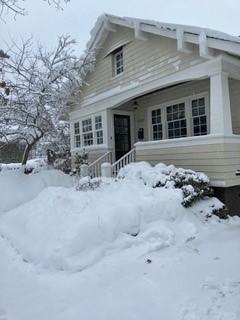 |
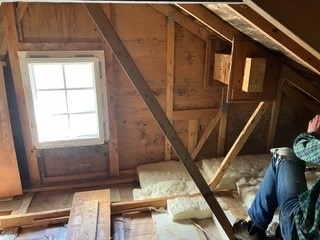 |
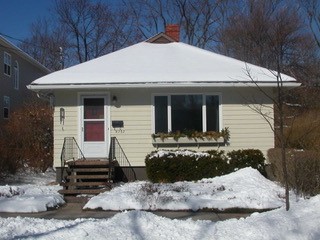 |
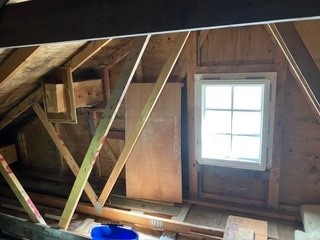 |
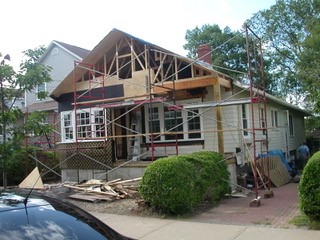 |
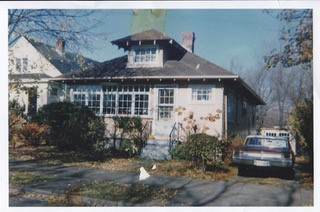 |
RELATED STORIES
_________________________________________________________________________________
DISCOUNT CODE FOR MONICA’S E-LEARNING MODULE
AIRQUALITY40
Well unfortunately that is all the time we have for today, Thanks to Monica, Brian, and Andres for joining me, and thanks to all of you for listening. Remember to send us your questions and suggestions to [email protected], and please like, comment, or review us no matter how you’re listening—it helps other folks find our podcast.
Happy Building!

























